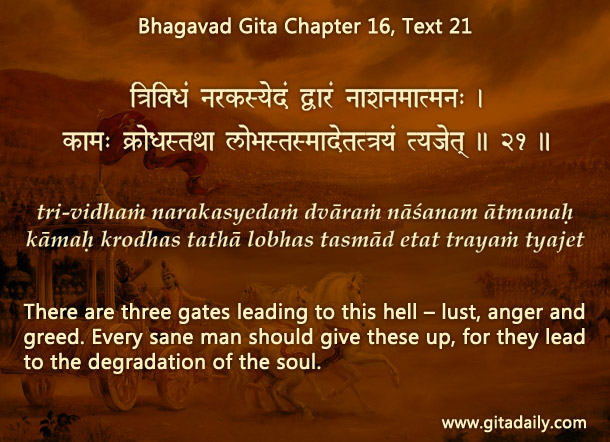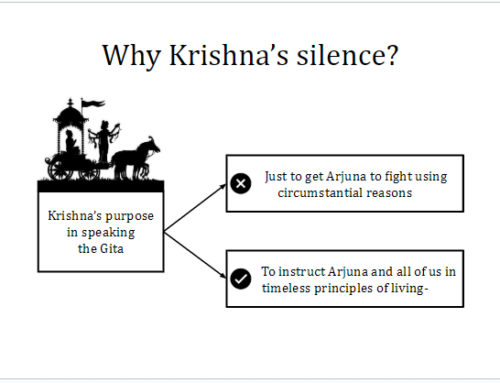Wisdom-texts often use metaphors as intellectual tools. Metaphors make abstract, abstruse concepts intelligible by comparing them with concrete, clear things from the real world.
The Bhagavad-gita uses metaphors frequently. In one insight-packed verse, it uses three distinct metaphors to convey the dynamics of our inner terrain. The Gita (16.21) states that lust, anger and greed are three gates to hell; they are destroyers of the soul; and we need to give them up. Let’s look at the metaphorical dimensions of these three points:
Gates to hell: Does hell literally have three doors named lust, anger and greed? No, the metaphorically verse conveys a causal connection, just as a doctor may say that smoking is the door to lung cancer. We usually associate hell with misery and passions such as lust with pleasure. By connecting these two with the image of a door, the Gita stresses that the supposedly enjoyable passions engender misery.
Destroyers of the soul: Can the soul be destroyed? No, the soul by its very nature is indestructible, as the Gita’s second chapter repeatedly declares. Here again, the usage is metaphorical: Just as we may say that over-eating destroys a good figure, the Gita says that passionate indulgences destroy a seeker’s spiritual prospects.
Give up: Are we literally holding on to these drives that the Gita tells us to give them up? No, these drives are not physical things to be grasped or dropped. The metaphorical point is that these drives thrive in our consciousness because of our own desire to enjoy what they allure us with, because of our own faith in their promises. We need to renounce that self-sabotaging desire, that ill-informed faith.
The Gita, by thus illumining our inner territory with multiple metaphors, equips us for making wise choices in our life-journey. As a concluding side-note, life-journey too is a metaphor.
To know more about this verse, please click on the image
Explanation of article:
Podcast:



Leave A Comment